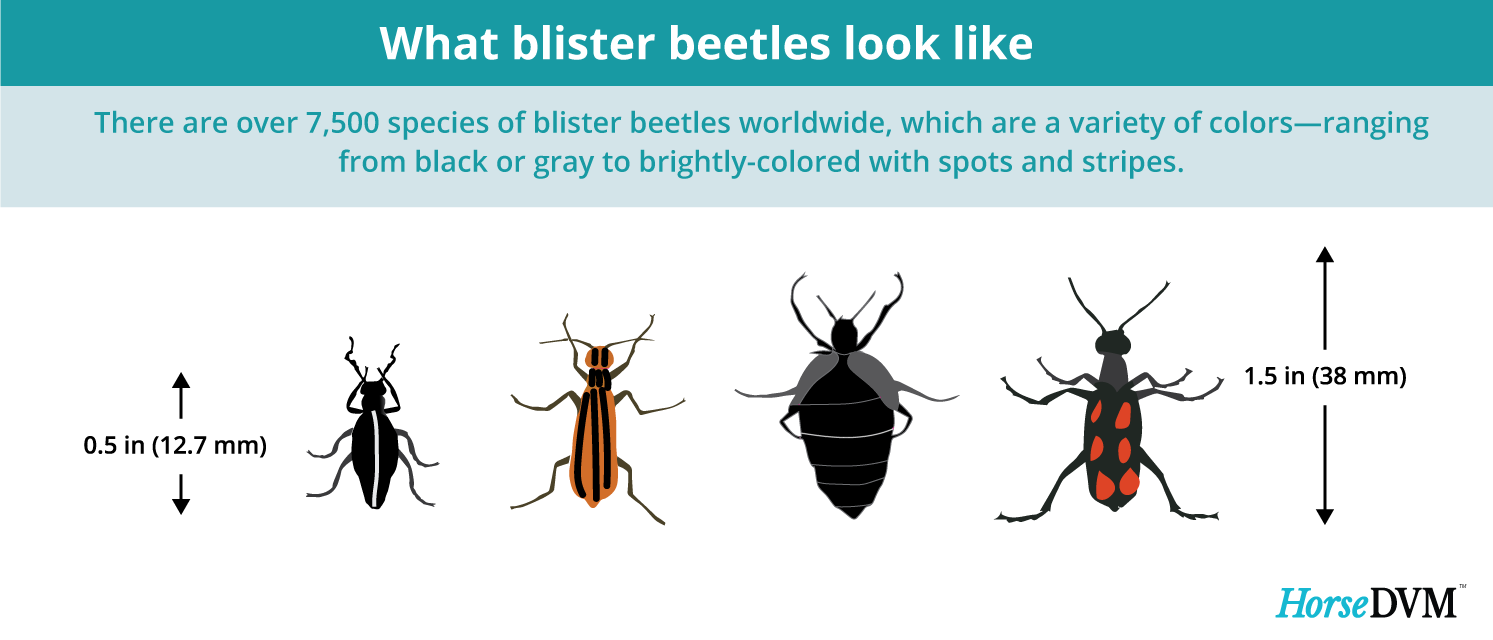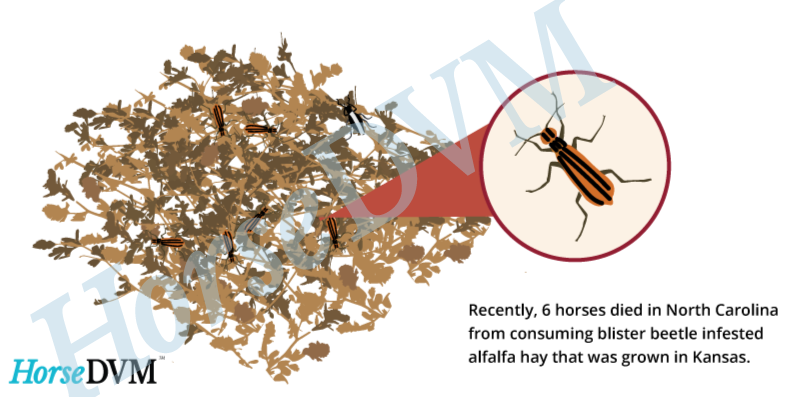Blister beetle toxicity occurs when horses eat hay contaminated with crushed blister beetles. These beetles secrete an irritating and toxic substance called canthanridin. There have been several instances in the United States where horses have died from eating hay contaminated with blister beetles.
There are thousands of different species of blister beetles, however the most commonly found are the striped blister beetle.
Different species and sexes of beetles have differing levels of the amount of cantharidin in their bodies, varying from 1 to 11.3% of their dry weight. This variability in cantharidin content has resulted in a wide range in number of beetles reported to cause death in horses--fatal poisonings have occurred from a few beetles to as many as 200.
Blister beetles are attracted to alfalfa, especially the flowers, and are most abundant during the mid-summer months, and thus more likely to be found in second cutting of alfalfa hay bales. In general, early and later cuttings of hay are less likely to have beetles present.
Unfortunately, blister beetles have a tendency to congregate in large clusters along field margins rather than spread out, which increases the likelihood that large numbers of beetles can become harvested within the hay. When the hay is cut and baled at the same time, generally with a crimper, this makes it harder for the beetles to escape the harvesting process and traps them into the hay. Therefore, it is better to purchase alfalfa where a crimper was not used. This means the hay was cut and left to dry then baled at a later time, which allows the beetles time to escape.
Clinical signs of blister beetle toxicity
If horses eat blister beetle contaminated hay, they usually develop blisters in their mouths and in their gastrointestinal tract, resulting from the irritation caused by the toxic substance (hence why the beetles are referred to as "blister beetles"). The severity of clinical signs varies depending on the number of beetles ingested. Most horses develop a reduced appetite, lethargy, colic signs, and seen dunking their mouths into the closest water source. Horses may also be seen stretching out to urinate and making frequent attempts to urinate.
Treatment
Treatment is aimed at reducing further absorption of the toxin, preventing dehydration, correcting electrolyte abnormalities and reduction in pain. Most horses will require hospitalization for a few days to possibly a week or more.
 Attention! This is a potentially life-threatening condition for your horse. Time is of the essence, contact your veterinarian immediately.Find a Vet
Attention! This is a potentially life-threatening condition for your horse. Time is of the essence, contact your veterinarian immediately.Find a Vet
